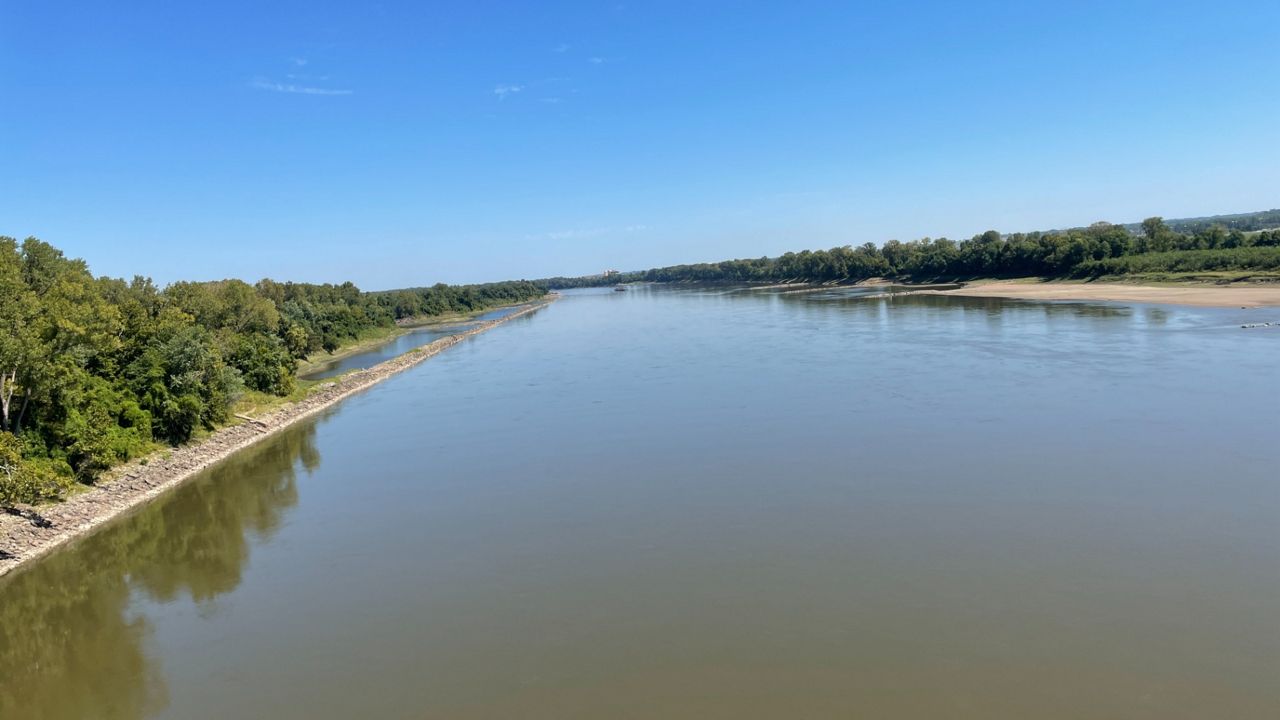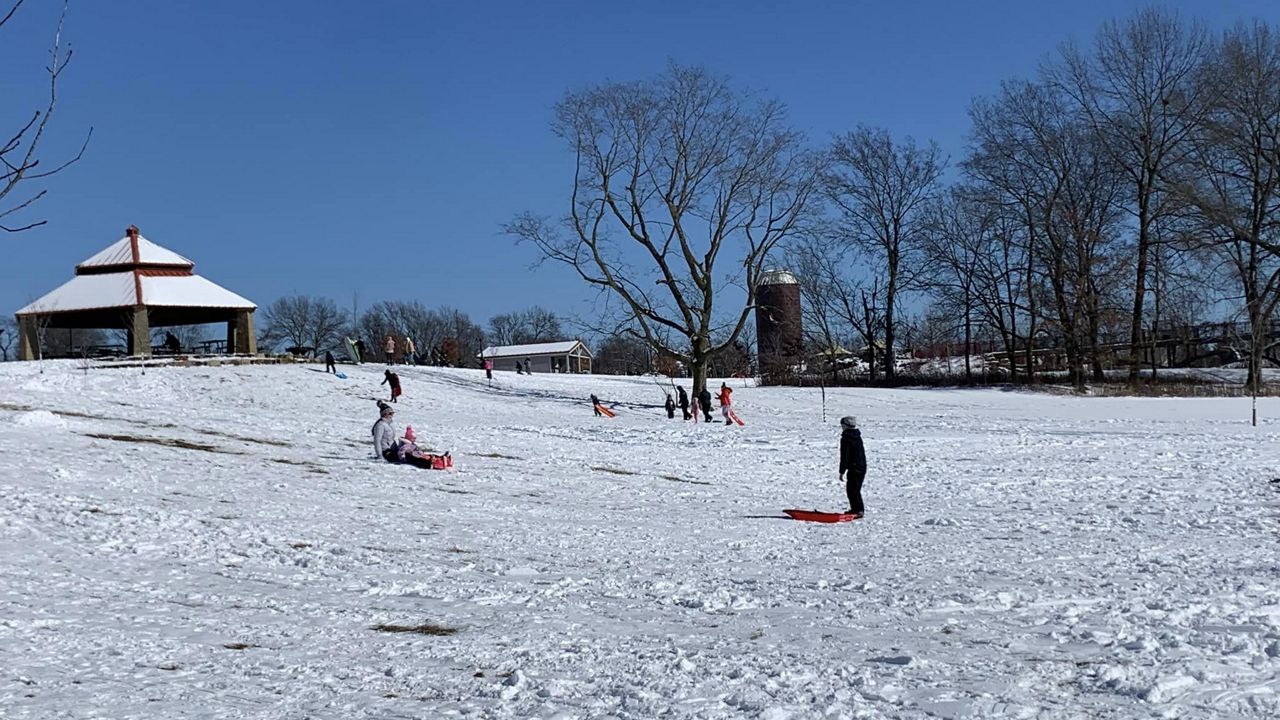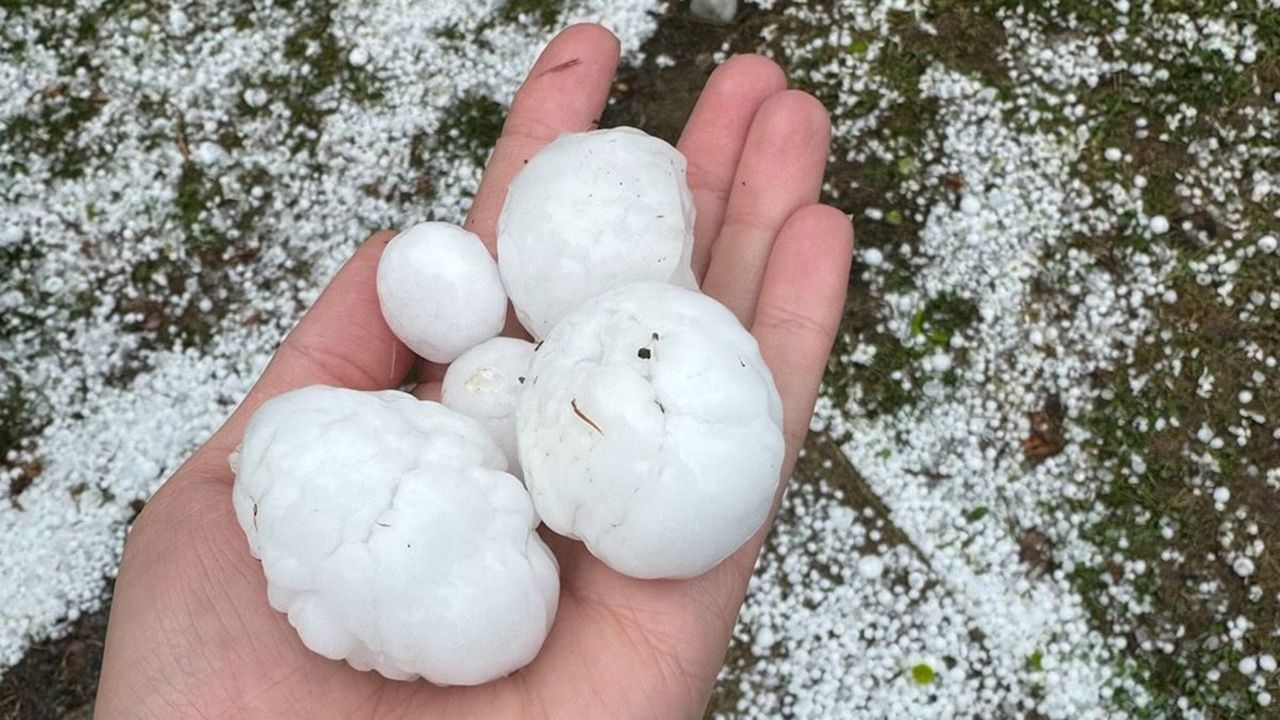Meteorological fall began on Sept. 1, whereas astronomical fall began on Sept. 22 this year. In general, September is a transitional month, and this past one lived up to its name.
Temperatures during the third week of the month soared into the upper 90s, even tying a record of 97 degrees on Sept. 20. The coolest high temperature occurred just three days later, when the mercury only reached 61 degrees.
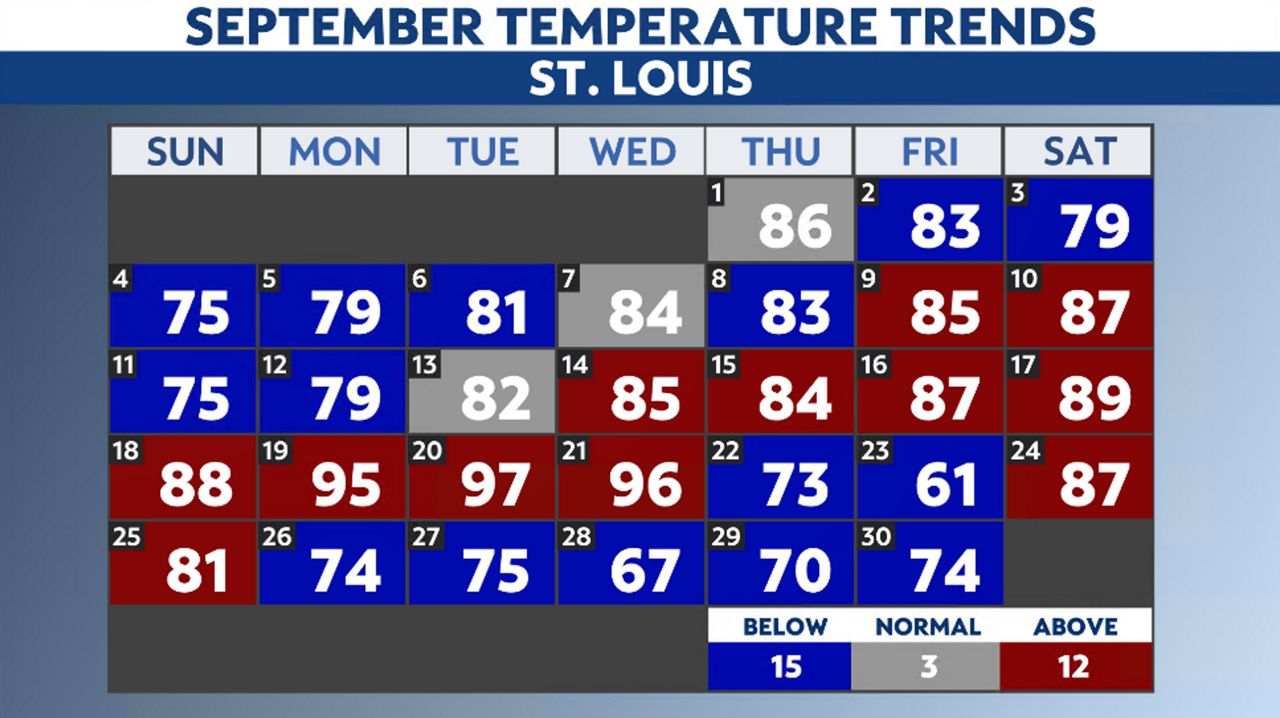
Rainfall for the month was lacking. In fact, totals were less than 2 inches of rain. Average rainfall is closer to 3 inches.
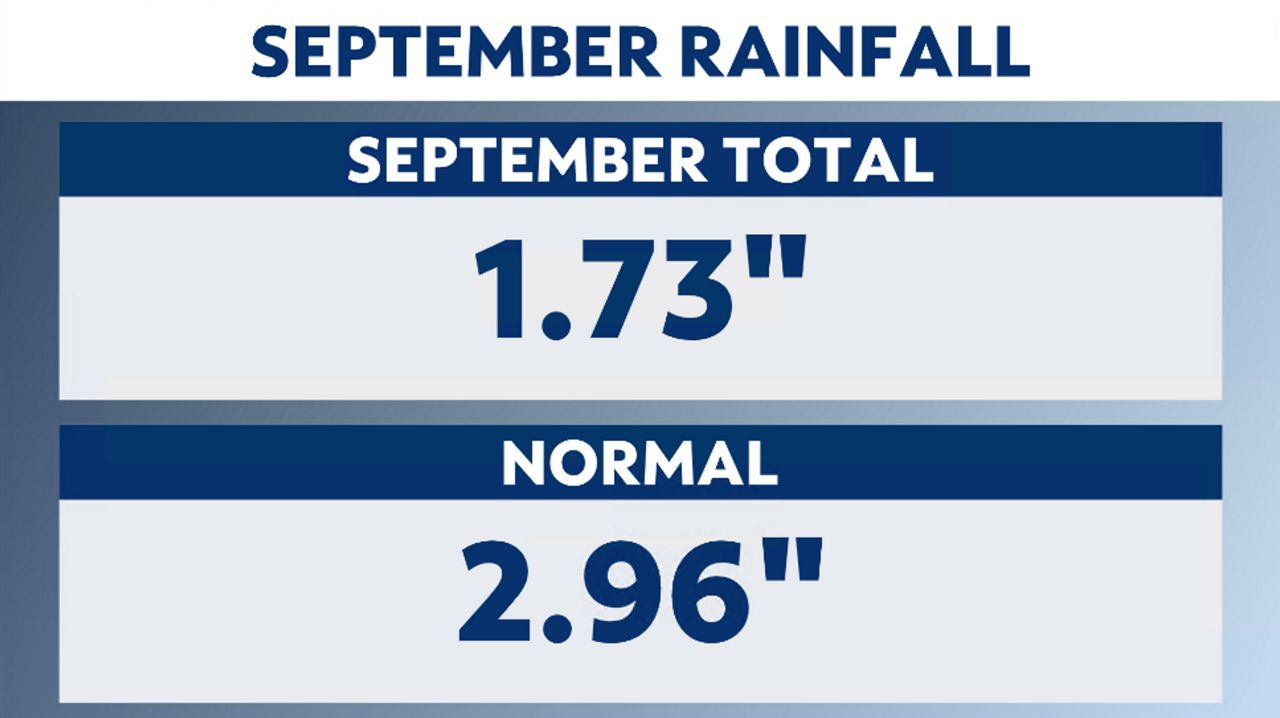
With the lack of rain, St Louis’ main rivers, the Missouri and Mississippi, showed visibly low water levels. This becomes concerning when barges need sufficient water levels to move commodities, especially during times of crop harvests.
The U.S. Army Corps of Engineers, St. Louis District, continues to monitor the low water levels along the Mississippi River.
“Based on a 28-day forecast, we do not see any areas where our dredging operations will not keep up with the forecasted falling river stages,” said Lou Dell’Orco, Chief of Operations.
As of Sept. 29, according to the U.S. Army Corps of Engineers, barge traffic is being limited along the Mississippi River to 25 barges, restricting the unloading of grain barges by 39% in New Orleans.
It’s not just here in St. Louis where we are seeing low levels. Areas both up and downstream from Minnesota to Louisiana saw below-normal rainfall during the month of September.
According to the latest Drought Monitor, drought conditions that were nearly wiped out in the summer have crept back up into the moderate and extreme ranges.
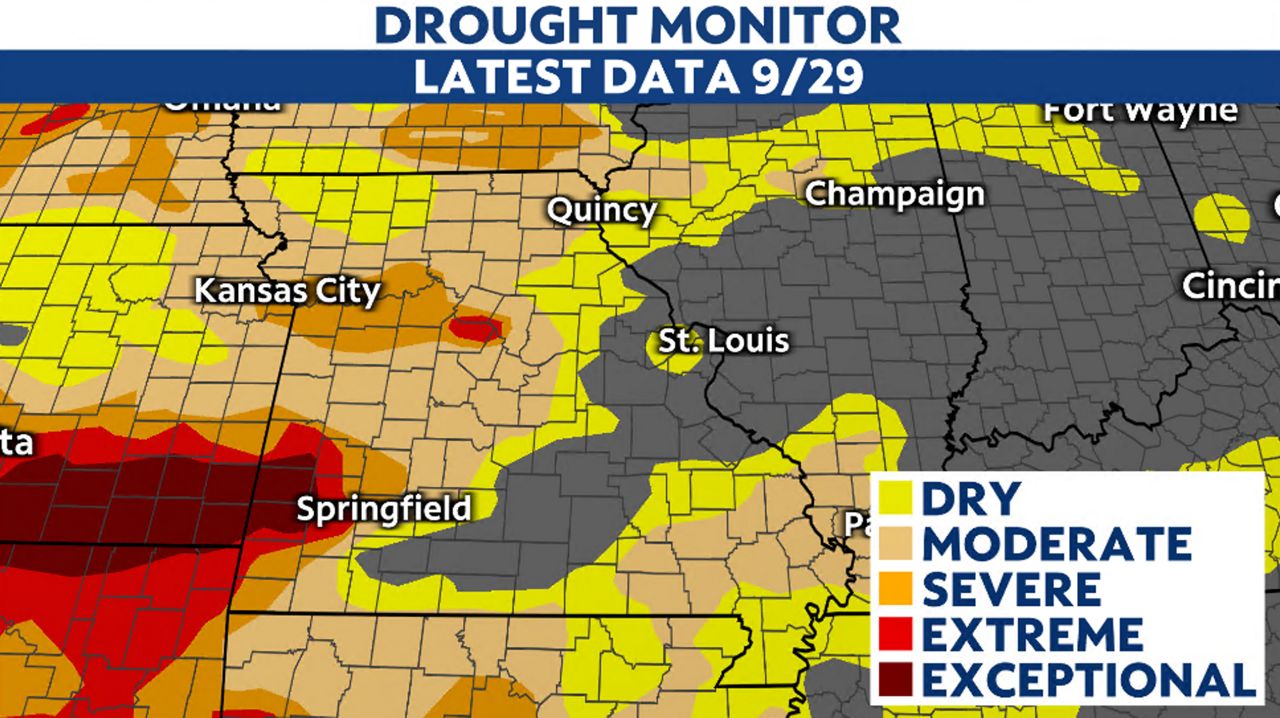
I spoke with Senior Hydrologist Mark Fuchs at the St. Louis National Weather Service recently about both river levels. He explained that there is more concern about the navigability of the Mississippi River as we enter the normally drier fall season.
To remedy the low levels, he says, “this situation will likely require increased dredging by the Corps to keep the channel open over the next few months.”
Stressing that navigation isn’t the only low flow concern along the rivers, “There are also potential issues with water withdrawal for public water supply and power generation at coal-burning plants.”
He adds the only solution to fix this situation is adequate rainfall in both the Lower Missouri River basin and the Upper Mississippi basin.
The climate outlook for October isn’t looking much better. The signal shows drier than average conditions likely around the St. Louis area and the basins of the rivers mentioned. Normal precipitation in October is only around 3 inches.
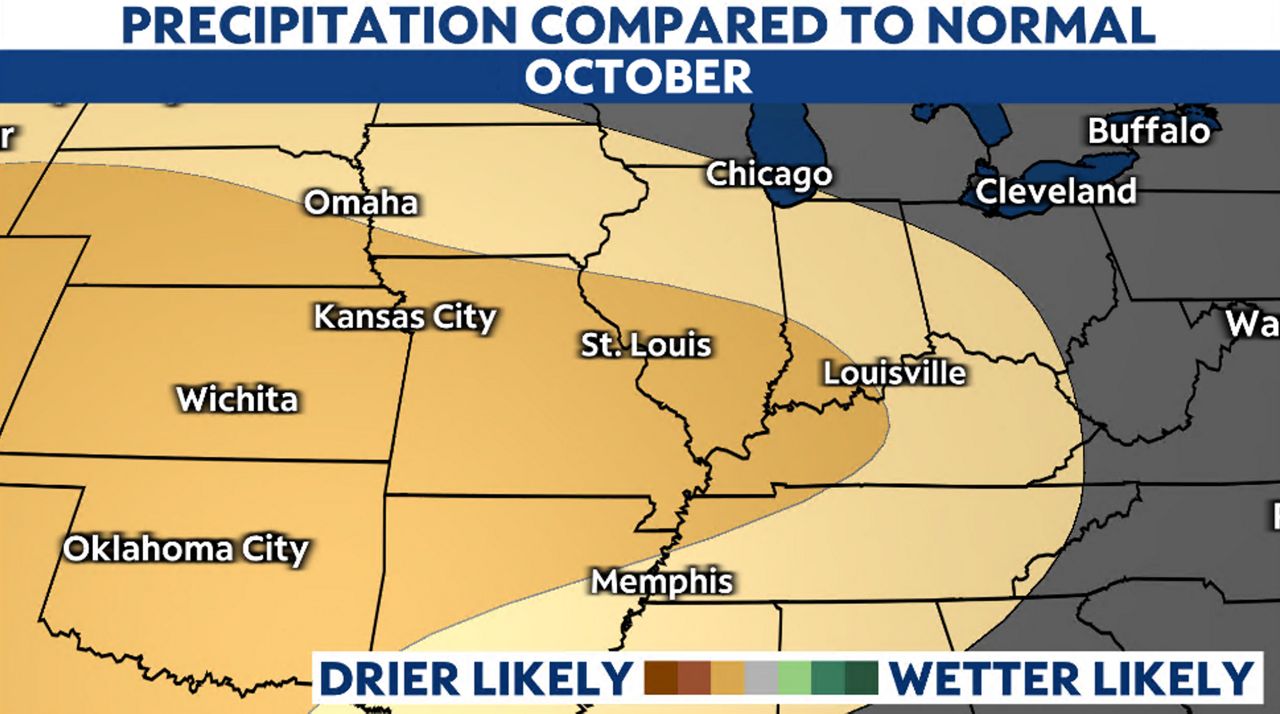
As for the outlook for temperatures, the climate signal is showing warmer than average conditions for the entire month. A warm and dry month won’t be helping the river water woes.
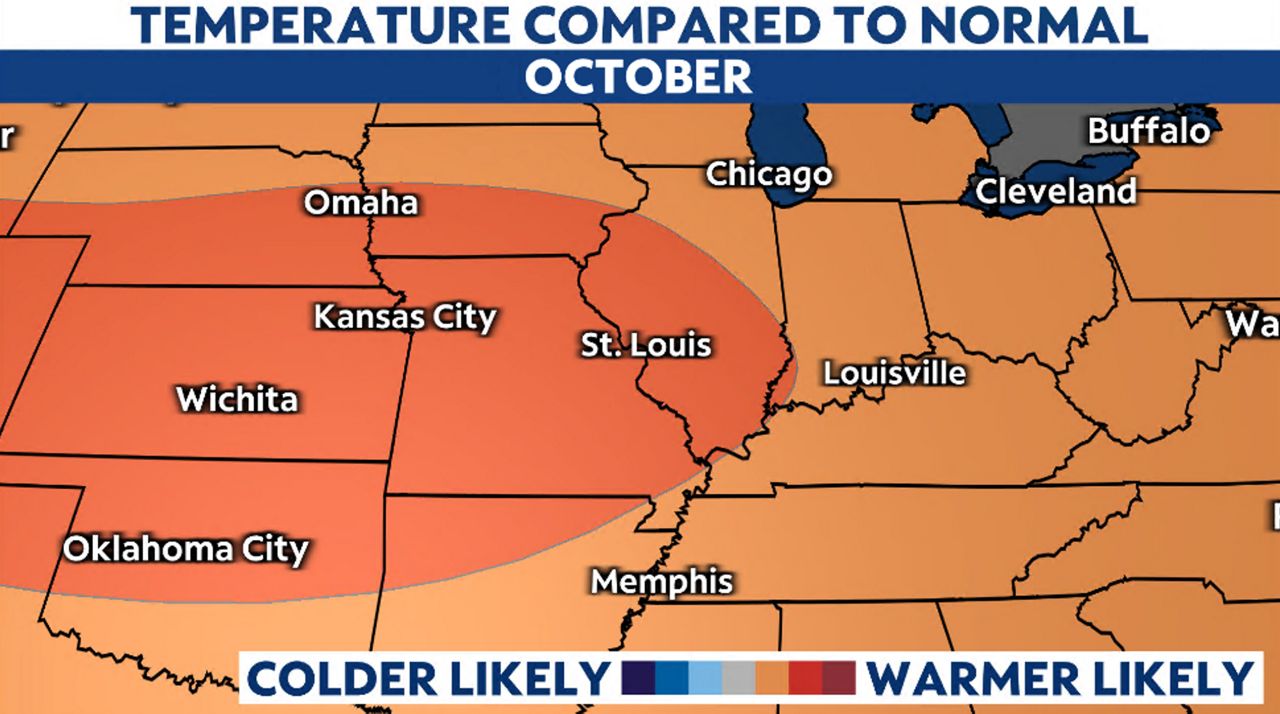
Our team of meteorologists dives deep into the science of weather and breaks down timely weather data and information. To view more weather and climate stories, check out our weather blogs section.





